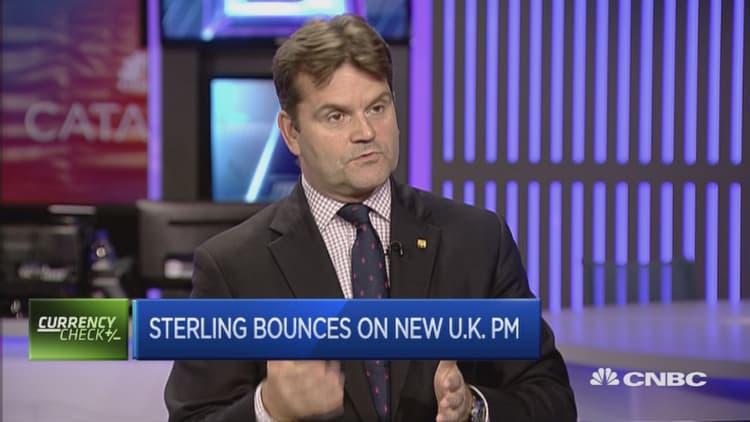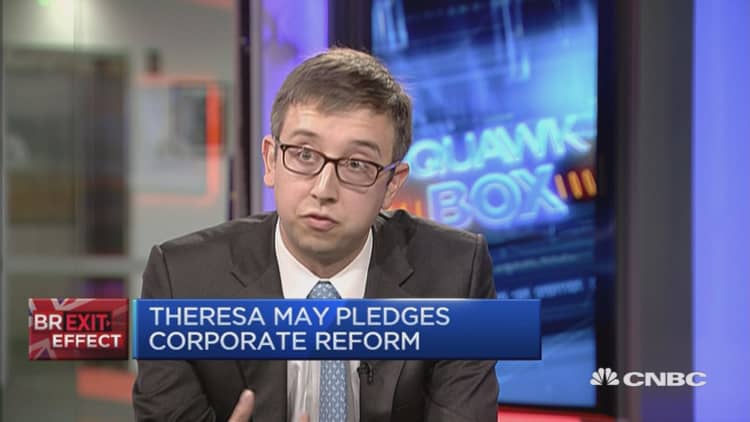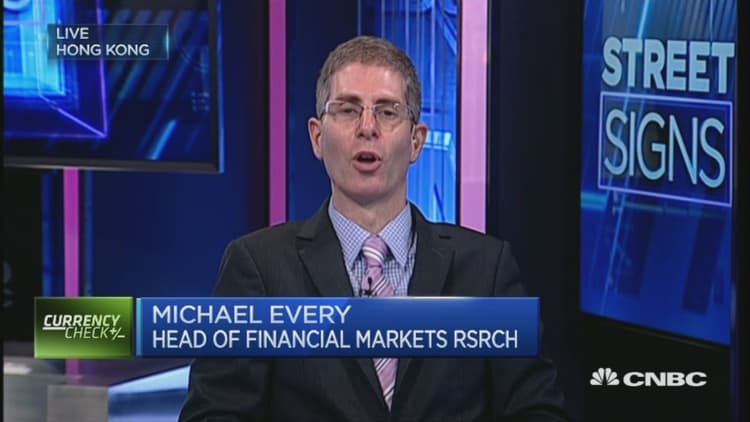The British pound could be showing signs of a false dawn, according to currency analysts, who suggest that a recent rally could soon give way to more bouts of heavy selling.
"We do not see the ... currency bounce as a major turning point for a firmer British pound moving forward, but rather expect further depreciation later on," Janwillem Acket, chief economist Swiss private bank Julius Baer, said in a note at the end of last week.
The result of Britain's EU referendum in June pummeled the pound down to 31-year lows. But a fresh new government, a lack of movement from the Bank of England (BoE), and some good corporate news has steered sterling back on a course higher.



The currency traded at 1.3233 against the greenback at around midday on Monday, a considerable step higher than the 1.2801 it reached on July 6. News of an acquisition of U.K. chip designer ARM Holdings and some hawkish comments from one of the BoE's policy makers helped sterling to rise on Monday morning.
But many currency traders are lying in wait for more downside, and remain critical of the recent appreciation. Speculators raised sterling net shorts in the last week, Reuters reported Friday citing data from the U.S. Commodity Futures Trading Commission. This was the highest amount of short positions since the week of June 7.
With the recent referendum still fresh in the mind, market participants will be looking for new official figures to gauge the strength of the U.K. economy. Some are still expecting a mild recession by the end of the year and sterling would likely fall in value with the economy signaling a fall into contractionary territory.
Kit Juckes, global head of foreign exchange strategy at Societe Generale, believes weak data this week on house prices, inflation and unemployment will convince markets that the failure of the Bank of England to ease in July was just a "temporary delay."
"On the other hand, if for some reason the data are OK, then who knows? It's bound to be fascinating. When all the dust settles, I think we'll see new lows for sterling," he said in a note on Sunday evening.
Stimulus from the central bank is also seen as negative for the currency with the extra liquidity it creates essentially flooding more pounds into the system. And despite surprising investors by holding rates last week, most members of the bank's monetary policy committee are expecting some sort of loosening in August.
With this in mind, Kallum Pickering, senior U.K. economist at Berenberg, expects trade-weighted sterling to remain at or even below current levels until the end of the year before rising modestly in 2017. Meanwhile, Lukman Otunuga, an analyst at spread-better FXTM Research, suggests a decisive break down below 1.32 for sterling could open a path back down towards the 1.28 level.
The next monetary policy decision by the Bank of England is due on August 4 and traders are poised to test the sustainability of this latest appreciation for the pound.


